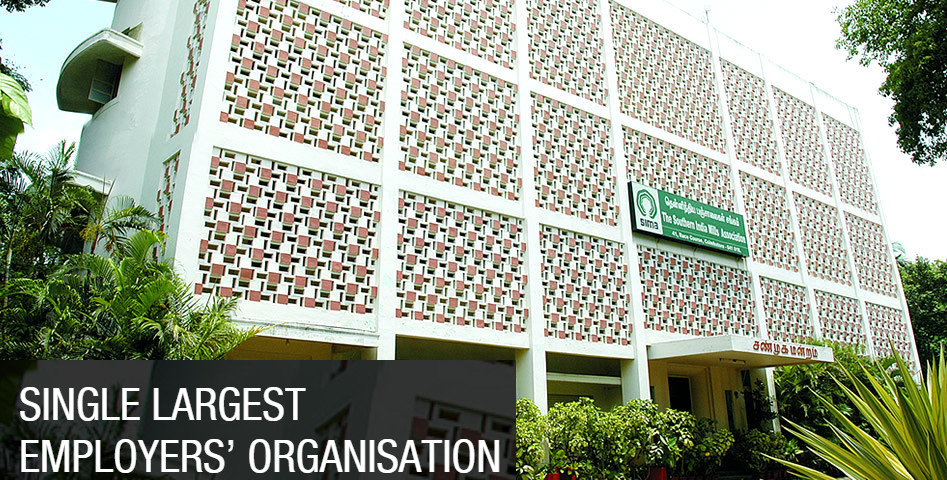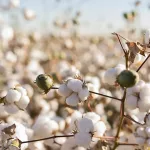
Skyrocketing Cotton Prices and Import Duty on Cotton
Coimbatore 26.7.2021: The predominantly cotton based Indian Textiles and Clothing Industry has often faced challenges owing to the volatility in cotton prices, that account for 60% of the cost of yarn for a spinner. The textile industry that has been facing it’s worst ever crisis due to the COVID-19 pandemic recovered from the first wave owing to a quick recovery in market demand, both domestically and internationally. The second wave, however, has had a more serious and lasting impact on domestic demand. The downstream exporting sectors, garments and made-ups segments, are finding it difficult to meet their export commitments due to the disruptions caused by lockdowns, shortage of workers and high logistics costs. In this scenario, the steep increase in Indian cotton prices has further destabilized the Industry and is making our exporters uncompetitive. The recent hike in price of Rs.3800/- per candy (355 kgs) of cotton in a span of 15 days by Cotton Corporation of India (CCI) and the 10% import duty levied in the Union Budget 2021-22 on cotton has enabled the trade to increase prices abnormally and this trend is continuing. Such steep increases are a severe blow for the entire cotton textile value chain.

Ashwin Chandran (SIMA Chairman)
Cotton Prices
In a Press Release issued here today, Mr. Ashwin Chandran, Chairman, The Southern India Mills’ Association (SIMA), has stated that the cotton prices have been increasing rapidly since January 2021 and skyrocketed during the current month. “CCI has increased the cotton price from Rs.51,000/- to Rs.54,800/- per candy of 355 Kgs since the beginning of July which has helped fueling the market”, says Mr. Ashwin. He has stated that the market price of Gujarat based Sankar-6 cotton that prevailed at Rs.43,300/- in January 2021 has increased to Rs.56,600/-, an increase of over 30%. Mr. Ashwin Chandran pointed out that the steep increase in cotton prices will not only affect the industry and squeeze margins, but will also lead to higher prices in apparel and textile goods for our domestic consumers, who are already burdened by the ill-effects of the COVID-19 pandemic. In addition, the SIMA Chairman has stated that there is no parity between the current cotton prices and yarn prices. This will in turn force spinning mills to increase yarn prices in the coming period to avoid incurring losses.
CCI Procurement
SIMA Chairman has stated that CCI had procured over 25% of the Indian cotton crop under Minimum Support Price operations. The cost of this procurement would work out to Rs.43,000 per candy. The current selling price is abnormally high. Even if the carrying costs and reasonable profit margins are taken into account, CCI could have maintained prices at a reasonable level of around Rs. 48,000 per candy to maintain stability. He added that though CCI offered three months lock-in period for bulk purchase, most of the spinning mills could not derive advantage from this due to the liquidity crunch and uncertainties in prices while the multinational cotton traders could take full advantage with hedging facilities and cheaper funds. They have purchased the major volume of CCI cotton at lower prices.
“Taking advantage of the 10% import duty levied on cotton, the trade has encouraged price speculation and the domestic prices in certain varieties such as ELS cotton has already exceeded the international price making our industry uncompetitive” said SIMA Chairman. He has stated that earlier the industry had an option of importing cotton and maintaining stability in yarn prices during the off season (July to September). This option is now unviable due to the 10% import duty. He said that because the country is poised to record a very high closing stock figure, of 110-120 lakh bales, such a steep increase in the cotton prices was never anticipated. The speculative market has encouraged the ginners and trade to mix inferior cotton and waste with the virgin cotton resulting in high trash content, short fiber content and high contamination, which affect the performance MSME spinning mills, power looms and handlooms. Our MSME spinning mills mostly opt for credit purchase from traders due to insufficient liquidity crunch and they mainly supply yarn to the power loom, hand loom and MSME knitting segments and therefore, the proportionate hike in yarn prices will be unavoidable in the coming month.
Cotton Production and Consumption
Mr. Ashwin has stated that though the Committee on Cotton Production and Consumption in its meeting held on 30th April had estimated 288 lakh bales as the mill consumption and 119 lakh bales as the closing stock for the current cotton season presuming normal functioning of the mills after the first wave of COVID-19, the second wave lockdown restrictions especially in States like Tamil Nadu brought the industry to a grinding halt for more than a month and consumption might drop by 15 to 20 lakh bales. SIMA Chairman has fervently appealed to the Government to withdraw the 10% import duty levied on cotton immediately to change the market sentiments and avoid further damage to the cotton textile value chain. Since the industry imports only around 11 to 12 lakhs annually (less than 4% of annual consumption) that too the cotton varieties not grown in India, the import duty does not help the Indian cotton farmers and is a big hindrance to the Indian Textile and Clothing Industry.





